March (Phalguna-Chaitra)
Holika Dahan

Holi is an ancient Indian festival. It is celebrated on the full moon day in the month of Phalgun. Two functions are celebrated on Holi: one is Holika Dahan and the other is Dhulendi i.e. the day of playing with colours and making everyone colourful. Actually this festival of colors is associated with Lord Krishna, who in his childhood played with Gopis and Gopas in Vrindavan. Holika Dahan symbolizes victory of good over evil.
Holika Dahan has a very important mythology behind. On this day bonfires are lit or logs of wood are burnt in memory of the miraculous escape that child Prahalad had when Holika, sister of Hiranyakashyap, carried him in to the fire. Holika the demon was burnt but Prahalad the staunch devotee of God Shri Hari Vishnu escaped without any burn. His total devotion towards God saved him from fire but Holika was burnt alive.
Festival of Burning of Holika (Holika Dahan) is celebrated on the Poornima(Full Moon Day) falling during Pradosh (Sun Set time). If Poornima falling during Pradosh get extended to two days then it is celebrated on second day and if on both the days it does not fall during Pradosh then it is celebrated on the first day. But, if on the first day it falls during Pradosh and on the other day it continues till 3.5 Praharas and the duration of Patipada is more than Poornima then this Holika Dahan is celebrated on the second day. Please note that the day is divided into 8 Praharas. The duration of each Prahara is three hours.
Holika Dahan is celebrated in the evening of Holika Dahan day. It is also known as Jalanewali Holi. In this ceremony people burn Holika and then visit friends and relatives and exchange gifts, sweets and greetings.
Holika (Dhulendi)
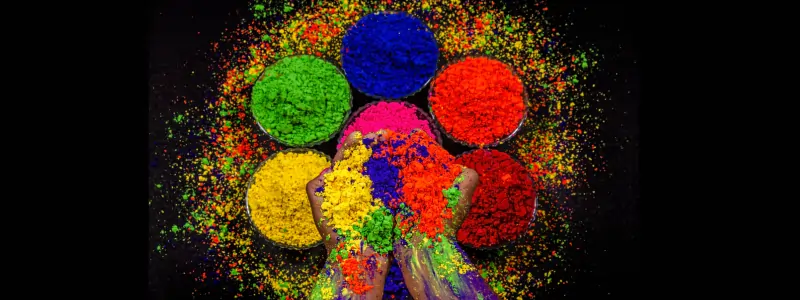
It is celebrated on the next day of Holika Dahan. It is also known as Rangwali Holi. The festival of Holi helps to bring the society together and strengthen the secular fabric of our country. Everybody celebrates the festival together with a spirit of bonhomie and brotherhood. The festival also promotes good health. Some believe that playing with colors help to promote good health as colors are said to have great impact on our body and health.
Sheetla Ashtami Pujan (Basoda)
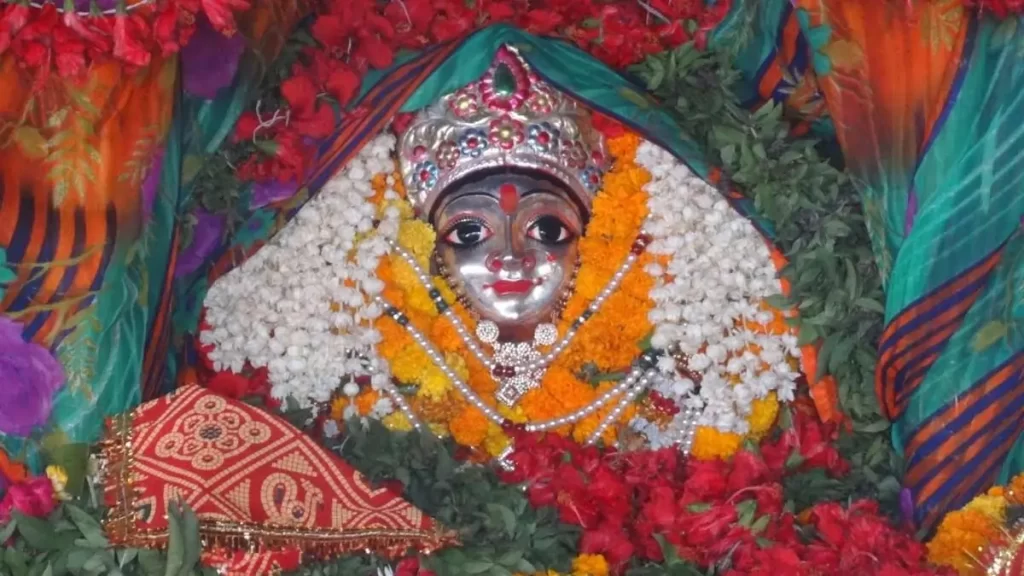
Shitala is an ancient folk deity widely worshipped by many faiths in North India, West Bengal, Nepal, Bangladesh and Pakistan as the pox-goddess. She is the Goddess of sores, ghouls, pustules and diseases.
One story says Goddess Durga has incarnated as little Katyayani, the daughter of sage Katyayan to destroy all arrogant evil demonic forces of the world, in her real form as Durga, she killed many demons that were sent by Kaalkeya.
A demon named Jwarasur, the demon of fever, started spreading incurable diseases to Katyayani’s childhood friends, such as cholera, dysentery, measles, smallpox etc. Katyayani cured the diseases of some of her friends. To relieve the world from all fevers and diseases, Katyayani assumed the form of Shitala Devi. Each of her four hands held a short broom, winnowing fan, jar of cooling water and a drinking cup. With her power, she cured all the children’s diseases. Katyayani then requests her friend, Batuk to go out and confront the demon Jwarasur.
A battle ensued between the young Batuk and demon Jwarasur. Jwarasur succeeds in defeating Batuk.. Finally, Bhairav wrestled with Jwarasur and killed him with his trident.
The auspicious day of Sheetalashtami, or Sheetala Ashtami, is dedicated to Goddess Sheetla in the month of Chaitra (March – April) as per the traditional Hindu calendar followed in North India. Devotees keep fast on the eighth day of the Krishna Paksha (waning phase of moon) in Chaitra month to cure from measles, chicken pox and small pox.
Devotees prepare food on the day before Sheetla Asthami and visit the to perform the puja of the goddess on the festival along with the food. People gorge on this food which is called Baseda in local lingo as a prasad of Sheetla mata. Some consider Bajra, Rabri and curd as an essential offering on this ocassion.
Nav Samvat
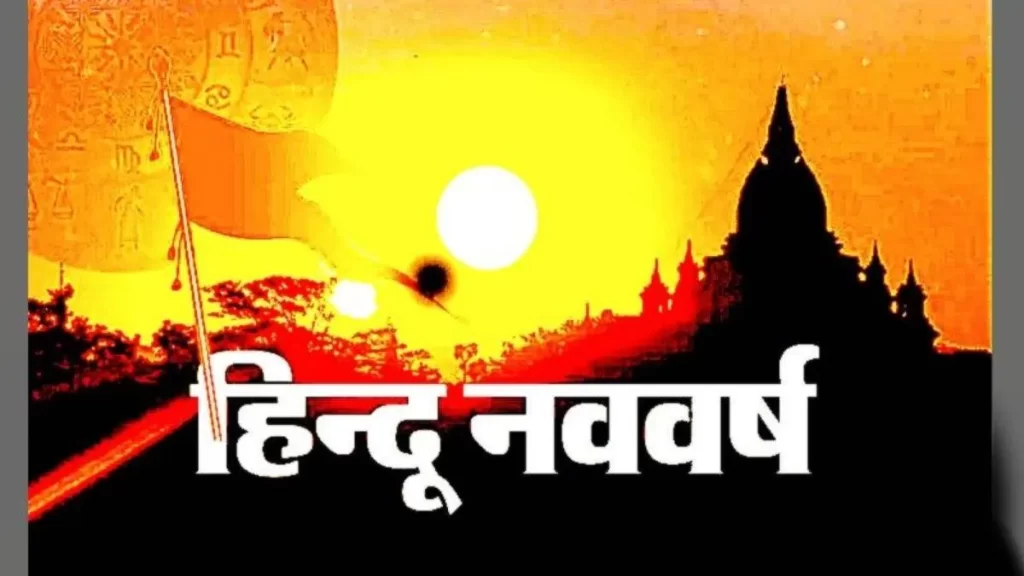
The Vikrama Samvat is said to have been founded by the emperor Vikramaditya of Ujjain[1] following his victory over the Sakas in 56 BC, although it is popularly (and incorrectly) associated with the subsequent king Chandragupta Vikramaditya. It is a lunar calendar based on ancient Hindu tradition (see Hindu calendar and Vedic time keeping). The Vikram Samvat calendar is 56.7 years ahead (in count) of the solar Gregorian calendar. For example, the year 2056 BS began in AD 1999 and ended in AD 2000. The new year begins with the first day after the new moon, in the month of Chaitra, Chaitra Shuddha 1 or Chaitra Shukla Paksha Prathama; which usually falls in March–April in the Gregorian calendar. The nine-day Navaratri festival season begins on this day, culminating on Ram Navami day.
The date is supposed to mark the victory of king Vikramaditya over the Sakas, who had invaded Ujjain. , Vikramaditya invaded Ujjain and drove away the Sakas. To commemorate this event, he started a new era called the Vikrama era. The Ujjain calendar started around 56 BCE to 58 BCE, and the subsequent Shalivahan Saka calendar was started in 78 AD at Pratishthan.
The New Samvat begins on Chaitra Shukla Pratipada falling at Sun Rise. If there is Adhik Maas (Extra month) then same should be taken. If Chaitra- Shukla-Pratipada falls twice or does not fall at Sun Rise then Samvat starts on the first day only. The traditional New Year of Bikram Samwat is one of the many festivals of Nepal, and coincides with the traditional new year in Assam, Bengal, Burma, Cambodia, Kerala, Kashmir, Manipur, Orissa, Punjab, Sri Lanka, Tamil Nadu and Thailand.
Navratra
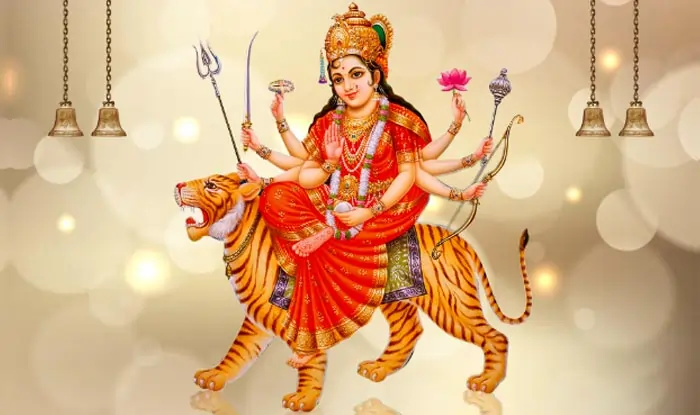
Navratri is the time to cleanse our own evil characteristic of us. The main purpose of observing fast is to cleanse our body and remove the negative characteristic.
Navratri is celebrated twice a year in India and other countries. This new day festival of Navratri in Hindu religion is dedicated to the nine manifestation of Goddess Durga in form of Shakti. Navratri is celebrated in large number of Indian communities. The mother goddess is said to appear in nine forms and each one is worshipped for a day. These nine forms signify various traits that the goddess influences us with
- Maa Shail Putri – She gives luck and happiness to the world.
- Maa Brahma chaarini – She gives the message of pure love to the world.
- Maa Chandraghanta – She establishes justice and wears crescent moon on her head.
- Maa Kush Maanda – She provides the basic necessities to the world.
- Skand Mata – She gives the gift of differentiation of right from wrong to the world.
- Maa Kaatyayini – She persistently battles against the evil.
- Maa Kalratri – She killed Rakta Beej.
- Maa Mahagauri – She liberates the world of evil forces.
- Maa Siddhi datri – She is a treasure of Mystic power (Yantra, Tantra and Knowledge).
Navratras start during Chaitra Shukla Pratipada falling during Sun Rise. If Pratipada falls or does not fall at Sun Rise then Navratras start on the first day. If Pratipada Tithi ends before the completion of only one Muhurat after sun rise in that situation Navratras shall start one day before.
Navratri Festival is celebrated by Hindus with great devotion for 10 days. Idol of Goddess Durga is worshipped during Navratri. People stay awake the whole night during the nine days of Navratri and play Dandiya and Garba. This festival is celebrated by all Hindus and has special significance in Gujarati community.
Festival of Navratri is full of lights, joy and festivity. Hindus celebrate this with devotion and enthusiasm throughout India.. People worship Goddess in three forms and try to enhance their physical, mental and spiritual practice in these nine days.
Some people eat only fruits and drink milk during the entire nine days and nights.
Some eat meal one time a day and that meal should be satvik, which means vegetarian meal which is prepared without the use of onion and garlic.
Fasting is not compulsory . It is good to keep mind, body and thoughts pure during the time of Navratri.
If possible try to light a Jyot in front of Goddess Durga’s statue or at least a picture throughout the nine days and nightsStart the prayers with praying for Lord Ganesha and then perform aarti in front of Goddess Durga.Men do not shave or cut their hair during this period.People do not wear black clothes during this period and avoid keeping leather goods with them.People worship young girls and feed them with sweets and different types of traditional and delicious food items. They consider them as form of Goddess Durga.Since it is believed that Goddess is fond of red flowers and red colour, women and young girls prefer wearing clothes in red and yellow colour.Fasting commences on the ninth night of Navratri.
People pray to Goddess Durga to destroy the evil during Navratri. They ask help and strength from the Goddess to fight against the evil and protect the Hindu dharma. In West Bengal, men and women celebrate Navratri festival as Durga Pooja and worship huge idols of Goddess Durga. In Gujarat people perform traditional dance which is known as Garba almost throughout the night.
Chaitra Navratri is celebrated after Holi and during Chaitra Shukla Paksha. This starts from the first day and ends on the ninth day which is also celebrated as Ram Navmi. The worship of Goddess on the eighth day is very important and auspicious and is significant in both Navratri festivals.
Cheti Chand (Sindhi)
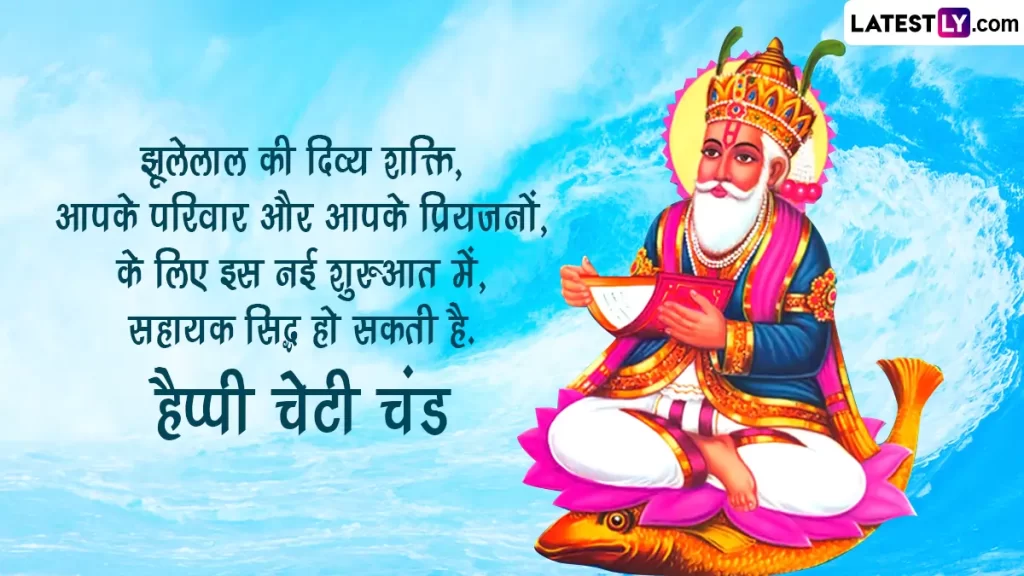
Cheti Chand is celebrated in honour of the birth of Sindhi Patron Saint Jhulelal and celebrated as New Year’s Day for Sindhis. Cheti Chand falls on the second day of the Chaitra month (known as Chet in Sindhi) and is very auspicious day for Sindhis.Sindhis all over the world celebrate this day in Jhulelal’s memory. On this day, people worship water – the elixir of life.
Jhulelal, Ishta Dev of Sindhis, was born on Cheti Chand, to Rattan Rao Luhana and his wife Devaki and is also known as Lal Sai, Uderolal, Varun Dev and Zinda Pir Cheti Chand falls on the second day of the Chaitra month and is very auspicious day for Sindhis. Sindhis all over the world celebrate this day in Jhulelal’s memoryLegend has it that.
Men neither shaved nor wore new clothes, praying and fasting and singing songs in praise of God Varuna.Even today Followers of Jhulelal perform this prayer for forty days (“chaliho”) and celebrate “Thanksgiving Day” after “chaliho”.
A huge procession taken out in public to celebrate Cheti Chand.On this day, many Sindhis take Baharana Sahib to a nearby river or lake.
Sindhis greet each other with “Cheti Chand jyon Lakh Lakh Wadayun Athav” on Cheti Chand.
Gangaur Teeja (Cha.)
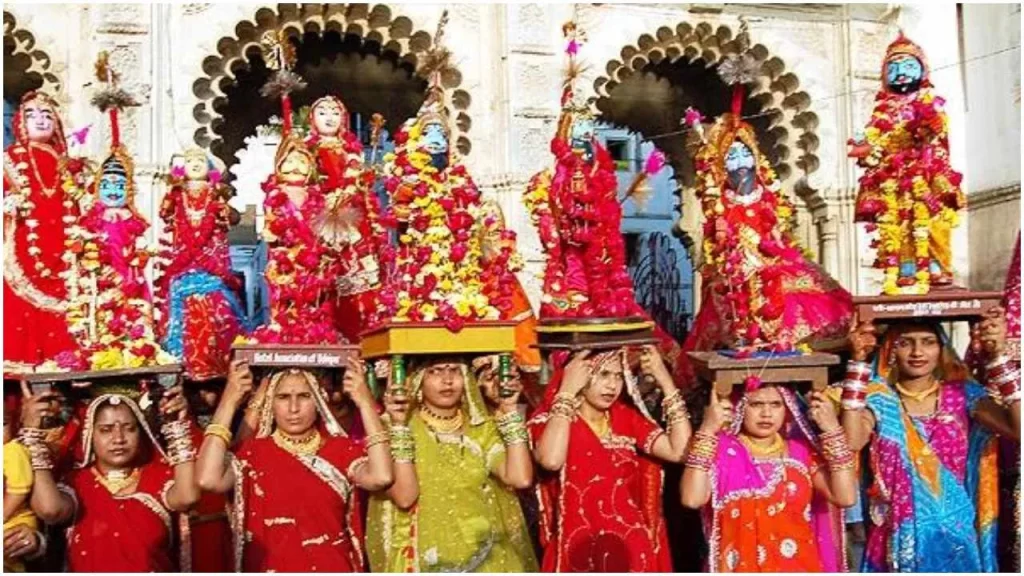
It is the celebration of spring, harvest and marital fidelity. Gana is a synonym for Lord Shiva and Gaur which stands for Gauri or Parvati who symbolizes Saubhagya (marital bliss). The unmarried women worship her for being blessed with a good husband, while married women do so for the welfare, health and long life of their husbands and for a happy married life.Numerous folklores are associated with Gangaur with Rajasthan, and parts of Madhya Pradesh, Haryana & Gujarat.This celebration is now more than 100 years old in Kolkata.
The festival commences on the first day of chaitra, the day following Holi and continues for 16 days. For a newly-wedded girl, it is binding to observe the full course of 18 days of the festival that succeeds her marriage.. Festivity consummates on 3rd day of Shukla Paksha of Chaitra Month.
Shri Panchami
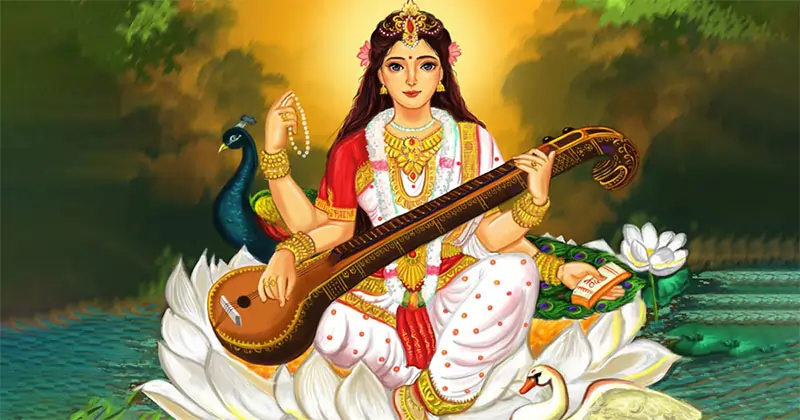
Shri Panchami also known as Shri Lakshmi Panchami and Shri Vrata is dedicated to Goddess Lakshmi, the Goddess of wealth and prosperity. Laxmi Panchami is observed on the fifth day during the waxing phase of the moon in Chaitra month – Chaitra Shukla Paksha
Sandalwood, banana leaves, garland of flowers, rice, durva, red thread, supari, coconut and other things are used to worship Goddess Laxmi. After worshipping Goddess Laxmi, food is offered to Brahmanas. Goddess Laxmi is a symbol of wealth and success. She is one of the three most powerful Devis. Goddess Laxmi is also associated with feelings related to attraction and greed. She provides everyone with wealth and success.
Shri Lakshmi Panchami is considered ideal to propitiate Goddess Lakshmi. It is believed that the prayers and observances dedicated to Goddess Lakshmi will help in attaining prosperity.
People perform special pujas to Goddess Lakshmi on the day. Some business people and traders conduct elaborate pujas on the day.
Skand Shashthi Vrat
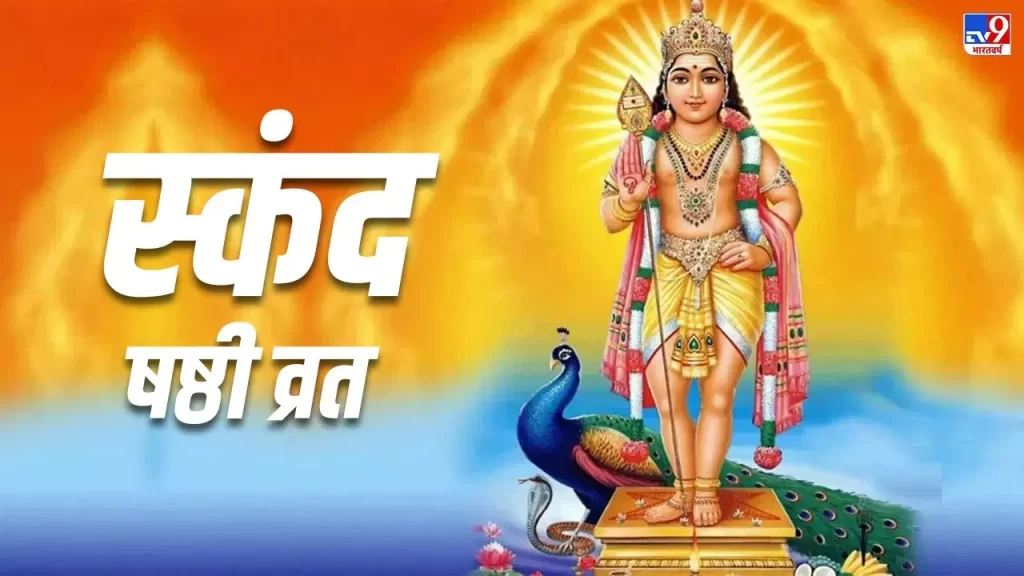
Shashti in Krishna Paksha of Kartik month is known as Skanda Shashti. According to Puranas, Lord Kartikeya was born on Shashti tithi. Hence, Lord Skanda is worshipped on this day. This day is considered very important for keeping a fast. A person should begin the fast from Panchami. Lord Skanda should be worshipped on Shashti tithi.It is believed that King Sharyati and Saint Bhargava are also associated with Skanda Shashti. It is also believed that Saint Chyavan receives his eyesight on this day.
According to Puranas, there was a battle between Devas and Demons. In this battle, demons were dominated devas and as a result Lord Indra and other devas went to Lord Shiva. Lord Shiva wanted to help devas and married Goddess Parvati. Lord Shiva and Goddess Parvati were married on an auspicious day. As a result, Kartikeya was born who killed Tarkasur. Devas regained their honor and dominance.
Lord Shiva and Goddess Parvati are worshipped on this day. Worshipping Lord Skanda and asking for something special is very beneficial on this day.. A person should not consume meat, alcohol, onion or garlic on this day.
Basant Durgashtami
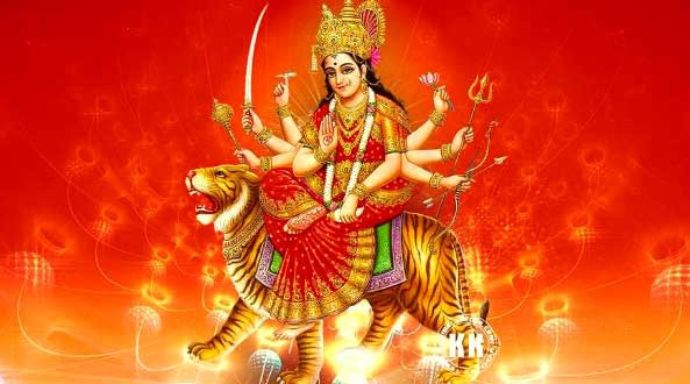
Durga Ashtami is celebrated in every part of the country with full zeal and enthusiasm. On this day, people worship the eighth manifestation of Goddess Durga and offer Kheer, Halwa and other dishes as sacraments. There is a tradition of worshipping small girl child on this day as nine forms of goddess. Offering Halwa Puri, giving them Dakshina are considered to be auspicious on Durga Ashtami.
Durgashtami, or Durga Ashtami, is the eighth day of the Navaratri and Durga Puja celebrations. Durgastami is also known as Mahashtami and is one of the important days of Durga Puja and a fasting is undertaken by many people. Weapons of Goddess Durga are worshipped on the day and it is known Astra Puja.
It is celebrated on Chaitra Shukla Ashtami connected with Navami covering atleast three muhurtas. If Ashtami falling on two days covers or does not cover three muhurtas then it is celebrated on first day only.
After the puja is completed, the devotees should welcome nine small girls in their home. First of all their feet are washed and the entrance of the house, and then they are welcomed inside the home. Then apply tilak on their forehead and tir moli on their left wrist. After that halwa puri are served to them, along with dakshina.
Ram Navami

Rama navami is celebrating the birth of the god Rama to King Dasharatha and Queen Kausalya in Ayodhya. Rama, the 7th avatar of Vishnu, is the oldest known god having human form. The holy day falls in the Shukla Paksha on the Navami, the ninth day of the month of Chaitra in the Hindu calendar. Thus it is also known as Chaitra Masa Suklapaksha Navami, and marks the end of the nine-day Chaitra-Navaratri (Vasanta Navaratri) celebrations. Rama navami is one of the most important Hindu festivals.If Chaitra Shukla Navami gets extended to two days and falls or does not fall during Madhyahana then it is celebrated on second day.
It is marked by continuous recitals, Akhand Paath, mostly of the Ramacharitamanas, organized several days in advance to culminate on this day, with elaborate bhajan, kirtan and distribution of prasad after the puja and aarti. Images of the infant Rama are placed on cradles and rocked by devotees.The important celebrations on this day take place at Ayodhya (Uttar Pradesh) Sita Samahit Sthal (Sitamarhi) (Bihar), Bhadrachalam (Telangana) and Rameswaram (Tamil Nadu),
Followers of Hinduism in South India normally perform Kalyanotsavam (marriage celebration) with small deities of Rama and Sita in their homes, and at the end of the day the deity is taken to a procession on the streets. This day also marks the end of the nine-day utsava called Chaitra Navaratri (Maharashtra) or Vasanthothsava (Telangana, Andra pradesh, Karnataka & Tamil Nadu) (festival of Spring), which starts with Gudi Padwa (Maharashtra). According to recent astrological studies, some consider his date of birth to be January 10, 5114 BCKalyanam, a ceremonial wedding performed by temple priestsPanakam, a sweet drink prepared on this day with jaggery and pepper.Procession of murtis in the evening, accompanied by playing with water and colours.
For the occasion, Followers of Hinduism fast or restrict themselves to a specific diet in accordance to VedaDharma. Vedic temples are decorated and readings of the Ramayana take place. Along with SriRama, people also worship Sita, Rama’s wife; Lakshmana, Rama’s brother; and Hanuman, an ardent devotee of Rama and the leader of his army in the battle against the rakshasa Ravana, the Brahmin king of Lanka.
Sri Rama Navami is shared with Swaminarayan Jayanti, the birth of Swaminarayan, who was born in the village of Chhapaiya in the state of Uttar Pradesh.
